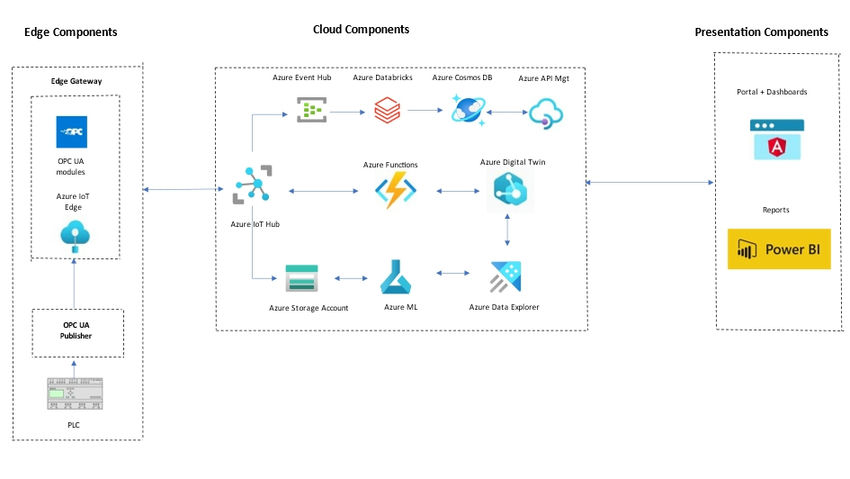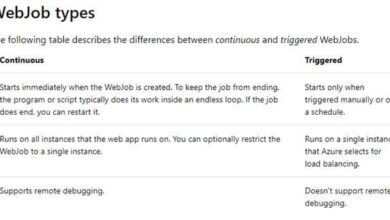Seamless Integration: OPC UA with Azure IoT
Introduction
The Industrial Internet of Things (IIoT) has completely transformed industries by connecting devices, machines, and systems to enable intelligent data-driven decision-making. In the realm of IIoT, OPC UA (Open Platform Communications Unified Architecture) is a crucial communication protocol. OPC UA provides a standardized and secure way to exchange data between devices and applications, making it the preferred choice for industrial automation and control systems. By integrating OPC UA with Azure IoT, the possibilities for seamless data exchange and advanced insights are limitless.
The Crucial Role of OPC UA in Seamless Integration
OPC UA has become a leading communication protocol due to its robustness, scalability, and interoperability. It allows devices from different vendors to effortlessly communicate, overcoming the challenges posed by proprietary protocols. OPC UA’s ability to handle complex data structures and support various security mechanisms makes it an ideal choice for mission-critical applications.
Azure IoT for Advanced Analytics
Azure IoT is Microsoft’s cloud platform designed to empower IoT solutions with advanced analytics, machine learning, and artificial intelligence capabilities. By integrating OPC UA with Azure IoT, industries gain access to a wide range of Azure services, enabling them to unlock the true potential of IoT data.
Secure Data Exchange with OPC UA and Azure IoT
Data security is a primary concern in the IoT world. OPC UA’s built-in security features, such as encryption and authentication, ensure secure communication between devices and the cloud. Azure IoT offers robust identity management and access control mechanisms, guaranteeing that only authorized devices and users can access critical data.
Seamlessly Connecting OT and IT Systems
The convergence of Operational Technology (OT) and Information Technology (IT) is essential for successful IIoT implementations. OPC UA acts as a bridge between traditionally isolated OT systems and cloud-based IT systems. With Azure IoT acting as a middleware, data from OT devices can seamlessly flow to IT applications, allowing for real-time monitoring and predictive analytics.
Edge Computing for Reduced Latency
In industrial settings, low latency and real-time responsiveness are crucial. Azure IoT Edge extends the capabilities of Azure IoT to the edge of the network, enabling data processing and analytics to occur locally on devices or gateways. This approach minimizes data transfer to the cloud, reducing latency and bandwidth usage while ensuring rapid decision-making.
Scalability and Flexibility
OPC UA’s scalability and Azure IoT’s cloud-native architecture complement each other, providing an elastic and flexible infrastructure for IoT deployments. Whether it’s connecting a few devices or scaling up to thousands, the integration of OPC UA and Azure IoT can handle the demands of diverse industrial environments.
Predictive Maintenance and Analytics
By leveraging OPC UA-enabled devices that feed data into Azure IoT, industries can take advantage of predictive maintenance and analytics capabilities. Machine learning algorithms can analyze historical data and patterns to predict potential equipment failures, enabling proactive maintenance and reducing downtime.
Architecture of OPC UA with Azure IoT Components
The architecture diagram consists of three parts: Edge Components, Cloud Components, and Presentation Components.
Edge Components
The Edge Components section comprises a smart controller (PLC), a data sender (OPCUA publisher), and a special helper (Edge Gateway). The Edge Gateway includes a custom module for data management (OPCUA custom module) as well as Azure IoT modules. The smart controller (PLC) sends data to the data sender (OPCUA publisher), which then passes it on to the special helper (Edge Gateway). The Edge Gateway has its own smart modules for managing data (OPC UA modules) and is connected to Azure IoT tools (IoT Edge hub and IoT Edge agent).
PLC
A Programmable Logic Controller (PLC) is a specialized computer used in factories to manage and control various machines and processes. It can be programmed to perform tasks like starting or stopping machinery, monitoring sensors, and making simple decisions based on received data. PLCs automate and streamline industrial operations, reducing the need for constant human oversight.
OPCUA Publisher
The OPCUA Publisher serves as a messenger, facilitating the sharing of important information between factories, machines, and computers/systems in a safe and efficient manner. It enables real-time monitoring and smart decision-making based on data.
Azure IoT Edge
Azure IoT Edge acts as a smart helper for devices, enabling them to perform advanced tasks locally rather than sending all the information to a remote computer. It functions as a mini-computer on the device itself, analyzing data and making real-time decisions. This capability is beneficial for tasks like machine control or conserving bandwidth by transmitting only essential information to the main system.
Cloud Components
The data collected from Edge Components begins its journey in Azure IoT Hub, which sends it to Azure Storage Account and Azure Event Hub. It then moves to Azure Databricks for processing before landing in Azure Cosmos DB. The processed data is utilized by Azure API Management, Azure Machine Learning (Azure ML), Azure Data Explorer, Azure Digital Twins, and Azure Functions to create comprehensive insights and visualizations.
- Azure IoT Hub: Acts as a central command center for IoT devices, managing and communicating with a large number of devices. It collects data from devices and sends commands, ensuring secure and reliable connections between devices and the cloud.
- Azure Event Hub: Collects and stores streams of data from various sources, such as applications or devices. This data can be used for analysis, monitoring, and triggering actions.
- Azure Storage Account: Provides a secure and accessible storage repository for files, images, and other data. It allows remote access to stored data and ensures the security and availability of data.
- Azure ML (Machine Learning): Enables the creation and training of models using data, allowing for prediction and decision-making based on discovered patterns.
- Azure Databricks: A collaborative workspace for analyzing and processing big data, uncovering insights and patterns.
- Azure Cosmos DB: A global data repository capable of storing various types of data and enabling access from anywhere in the world. It ensures fast and reliable data retrieval.
- Azure API Management: Facilitates the management, security, and monitoring of APIs used for communication between different software systems.
- Azure Functions: Executes mini-programs triggered by events, allowing for efficient smaller task execution, such as notifications or data processing.
- Azure Digital Twins: Allows the creation of digital representations of physical objects, aiding in understanding, monitoring, and predicting performance issues.
Presentation Components
The processed data residing in Azure Cosmos DB serves as a source for multiple APIs powered by the Node.js technology stack. Leveraging these APIs, a dynamic dashboard or portal can be created using leading JavaScript frameworks such as Angular or React. This presentation layer elegantly presents the data to end-users, completing the user experience loop.
Conclusion
The seamless integration of OPC UA with Azure IoT has opened up transformative opportunities in the IoT world, especially in the industrial sector. The combination of secure data exchange, real-time analytics, and edge computing capabilities enables industries to fully leverage their IoT data. Skrots, as a provider of similar services, recognizes the importance of OPC UA and Azure IoT in driving innovation and efficiency. We invite you to visit https://skrots.com to learn more about our company and explore our comprehensive range of services and solutions. Thank you for considering Skrots as your trusted IoT partner.
Know more about our company at Skrots. Know more about our services at Skrots Services. Also, check out all other blogs at Blog at Skrots




